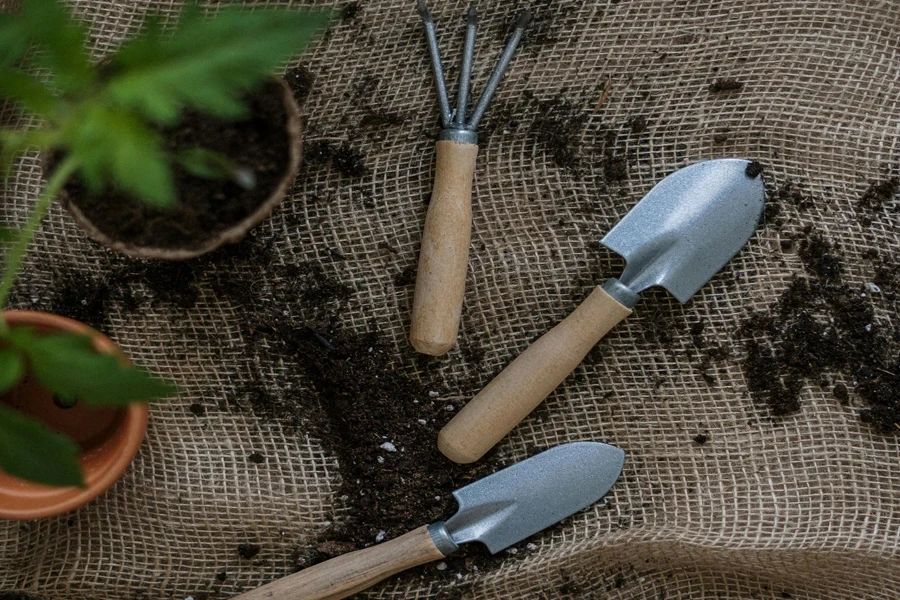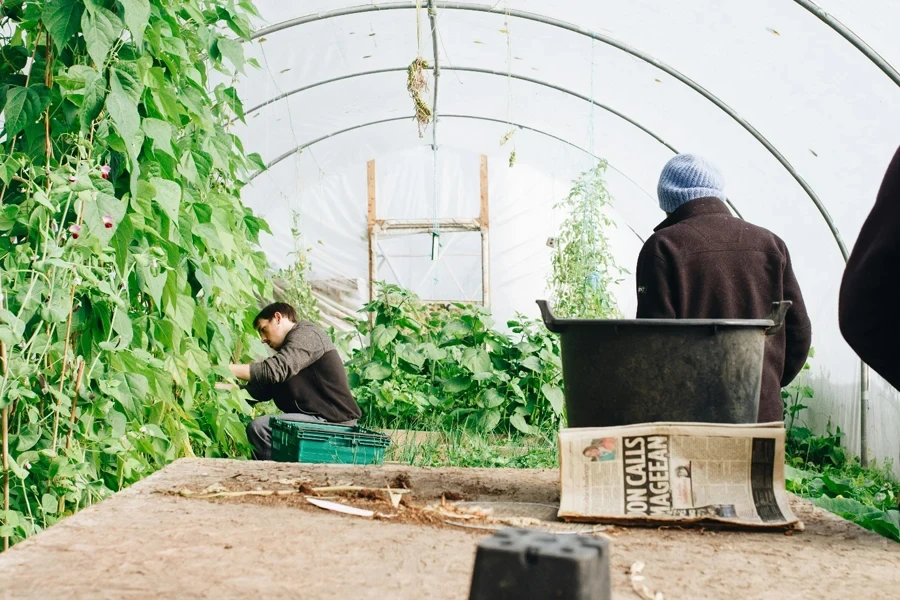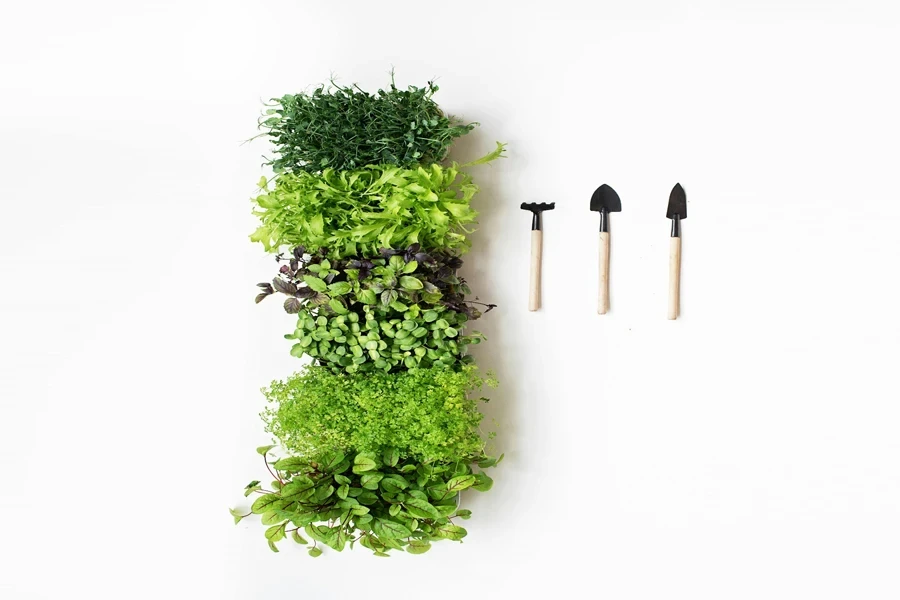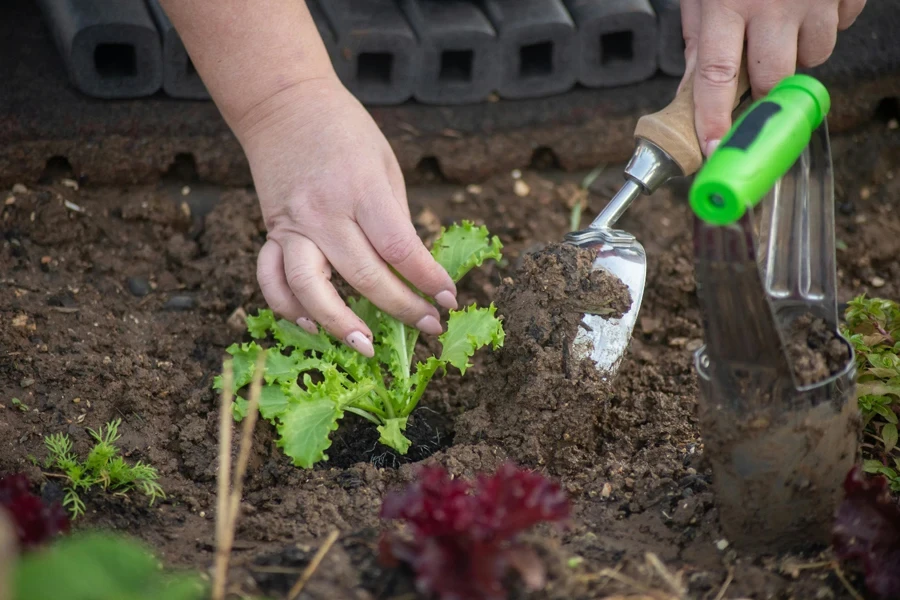Table of Contents
• Introduction
• Market overview
• Different types of garden supplies
• Things to consider when selecting products
• Conclusion
Introduction

Every gardener, from novice to expert, relies on the right tools to cultivate and maintain a flourishing garden. This comprehensive guide explores the essential gardening supplies, offering detailed market insights and practical tips for selecting suitable products. Understanding the market dynamics and choosing the appropriate tools can significantly enhance the gardening experience. Highlighting key factors such as garden size, climate, and product quality, this guide aims to equip businesses with the knowledge needed to make informed purchasing decisions. Discover the critical components of successful gardening and the latest trends in the gardening equipment market.
Market overview

Market scale and growth
The global gardening equipment market, valued at USD 68.16 billion in 2023, is projected to reach USD 128.67 billion by 2033, growing at a CAGR of 6.60%. This substantial growth is driven by increasing consumer interest in gardening and landscaping, supported by rising disposable incomes and the growing trend towards eco-friendly practices. The market encompasses a wide range of products including lawnmowers, hedge trimmers, chainsaws, blowers, hand tools, and irrigation systems, which cater to both residential and commercial sectors.
Regional insights
North America currently holds a significant share of the market, with the U.S. alone reaching a market size of USD 17.26 billion in 2023. This region is expected to maintain its dominance due to high adoption rates of advanced gardening equipment and the rising popularity of battery-powered tools. Meanwhile, the Asia Pacific region is anticipated to experience the fastest growth, with a projected CAGR of 6.9% from 2024 to 2033. Factors such as rapid urbanization, increasing disposable incomes, and a growing interest in gardening and landscaping are fueling this growth.
Different types of garden supplies

Seeds and soil
Good quality seeds are crucial for a successful garden, with options ranging from hybrid to heirloom varieties. Hybrid seeds are engineered for disease resistance and higher yield, while heirloom seeds offer unique traits and flavors. The germination rate of seeds, often listed as a percentage, indicates the viability and should be above 85% for optimal results. Soil composition is vital, with loamy soil being ideal due to its balanced texture and nutrient content. Soil pH meters can be used to ensure the soil is within the optimal pH range of 5.5 to 6.5. Additionally, incorporating organic matter such as compost can improve soil structure and fertility, enhancing water retention and aeration.
Fertilizer and pots
Fertilizers come in various formulations, including granular, liquid, and slow-release types, each suited for different applications. Nitrogen-phosphorus-potassium (NPK) ratios, such as 10-10-10 or 20-20-20, indicate the concentration of these essential nutrients. For example, a high-nitrogen fertilizer (e.g., 30-10-10) is beneficial for leafy plants, while a balanced one (e.g., 10-10-10) supports overall growth. Pots made from materials like terra cotta and ceramic provide breathability, preventing root rot by allowing excess moisture to evaporate. Self-watering pots and those with drainage holes are essential for managing soil moisture levels, particularly for plants sensitive to overwatering.
Pruning tools and irrigation equipment
Pruning tools, including bypass pruners and loppers, are essential for precise cuts and maintaining plant health. Bypass pruners, with their scissor-like action, are ideal for live branches, while anvil pruners are suited for dead wood. Electric pruning shears can reduce manual effort and increase efficiency, especially in larger gardens. Irrigation equipment such as soaker hoses and drip irrigation systems provide targeted watering, reducing water waste and preventing fungal diseases by keeping foliage dry. Flow meters and timers can be integrated into irrigation systems to monitor and automate watering schedules, ensuring consistent moisture levels.
Protective gear and maintenance tools
Garden gloves made from materials like nitrile or leather offer different levels of protection and dexterity. Nitrile gloves provide excellent resistance to chemicals and punctures, while leather gloves are durable and suitable for heavy-duty tasks. Maintenance tools such as stainless steel rakes and hoes are resistant to rust and corrosion, ensuring longevity. Shovels with ergonomic handles reduce strain during extended use. Multi-functional tools, like those with interchangeable heads, can enhance efficiency by combining several functions into one versatile tool.
Transport and storage solutions
Wheelbarrows with pneumatic tires offer smooth navigation over uneven terrain, while those with non-pneumatic tires provide puncture resistance. Two-wheeled models offer greater stability and balance when transporting heavy loads. Proper storage solutions, such as tool racks and shed organizers, help keep tools in good condition. Hanging tools off the ground prevents moisture buildup and rust, while tool maintenance kits, including sharpeners and lubricants, ensure tools remain in peak operating condition. Regular maintenance routines, such as cleaning tools after use and applying protective coatings, extend their lifespan and functionality.
Things to consider when selecting products

Garden size and needs
The size of a garden dictates the scale and type of tools required. For small gardens, compact tools like hand trowels, mini rakes, and short-handled pruners are often sufficient. These tools are designed for precision and ease of use in confined spaces. Conversely, larger gardens necessitate more robust equipment. Long-handled shovels, heavy-duty hoes, and motorized equipment such as gas-powered tillers or ride-on lawnmowers are essential for managing extensive areas. Additionally, the types of plants cultivated play a significant role; for instance, vegetable gardens may require specialized tools like seed drills and row planters, while flower gardens might benefit from precision shears and bulb planters.
Climate considerations
Local climate conditions heavily influence the selection of gardening tools and supplies. In arid regions, tools designed for efficient water use, such as drip irrigation systems with built-in timers and moisture sensors, are crucial. These systems deliver water directly to the root zone, minimizing evaporation and water wastage. In contrast, areas with heavy rainfall benefit from raised bed kits and soil aeration tools to enhance drainage and prevent waterlogging. Soil conditioners like perlite or vermiculite can improve aeration and soil structure, essential for managing moisture levels. Moreover, frost blankets and greenhouse kits are vital for protecting plants in colder climates, ensuring consistent growing conditions.
Quality and price
Investing in good quality gardening tools can result in long-term savings and increased efficiency. Good quality tools are often made from materials like stainless steel or carbon-fiber composites, which offer superior durability and resistance to corrosion. For example, pruning shears with high-carbon steel blades maintain sharpness longer and provide cleaner cuts, reducing plant damage. While the initial cost may be higher, the reduced need for replacements and repairs offsets this expense. Additionally, tools with replaceable parts, such as interchangeable blades or handles, extend the tool’s lifespan. Evaluating tools based on factors like blade hardness (measured in Rockwell units) and handle ergonomics (including grip texture and angle) can provide insight into their long-term value.
Maintenance and ergonomics
Tools that are easy to maintain and designed for ergonomic use enhance gardening efficiency and comfort. Stainless steel tools resist rust and require less frequent sharpening, while those with non-stick coatings prevent soil buildup. Maintenance kits that include sharpening stones, lubricants, and cleaning brushes are essential for keeping tools in optimal condition. Ergonomically designed tools feature contoured handles, adjustable lengths, and lightweight materials like aluminum or fiberglass. These features reduce strain on the user’s body, particularly during prolonged use. For example, ratchet pruners, which require less force to operate, can significantly reduce hand fatigue and are particularly beneficial for those with arthritis or limited hand strength. Tools with anti-vibration handles and padded grips also enhance comfort and usability.
Conclusion

Selecting the right gardening supplies is crucial for a successful and enjoyable gardening experience. Understanding market trends and carefully considering factors such as garden size, climate, and tool quality enables gardeners to make informed choices. Good quality tools tailored to specific needs and conditions not only enhance efficiency but also ensure long-term satisfaction and productivity in gardening efforts.




